Loom
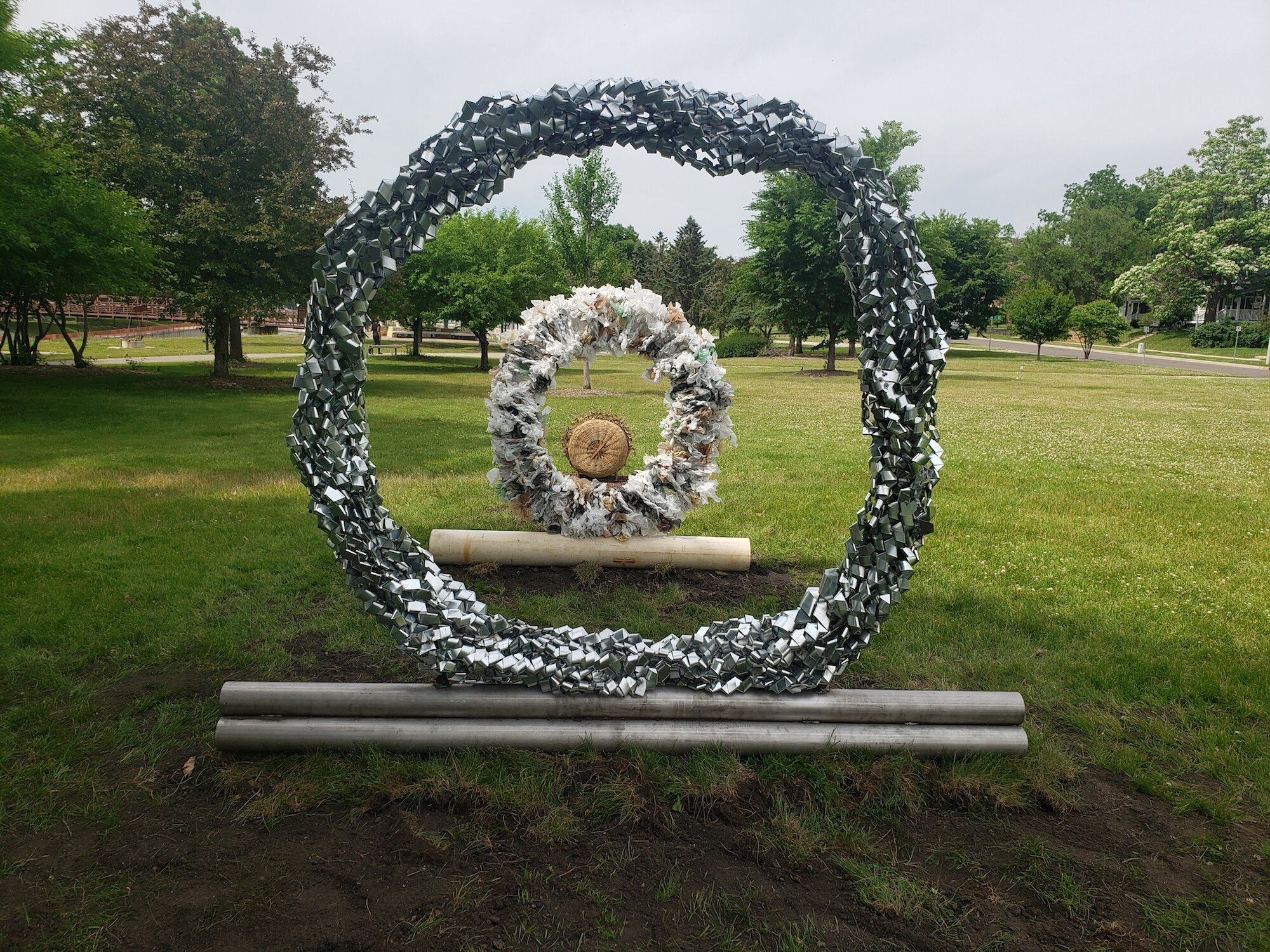
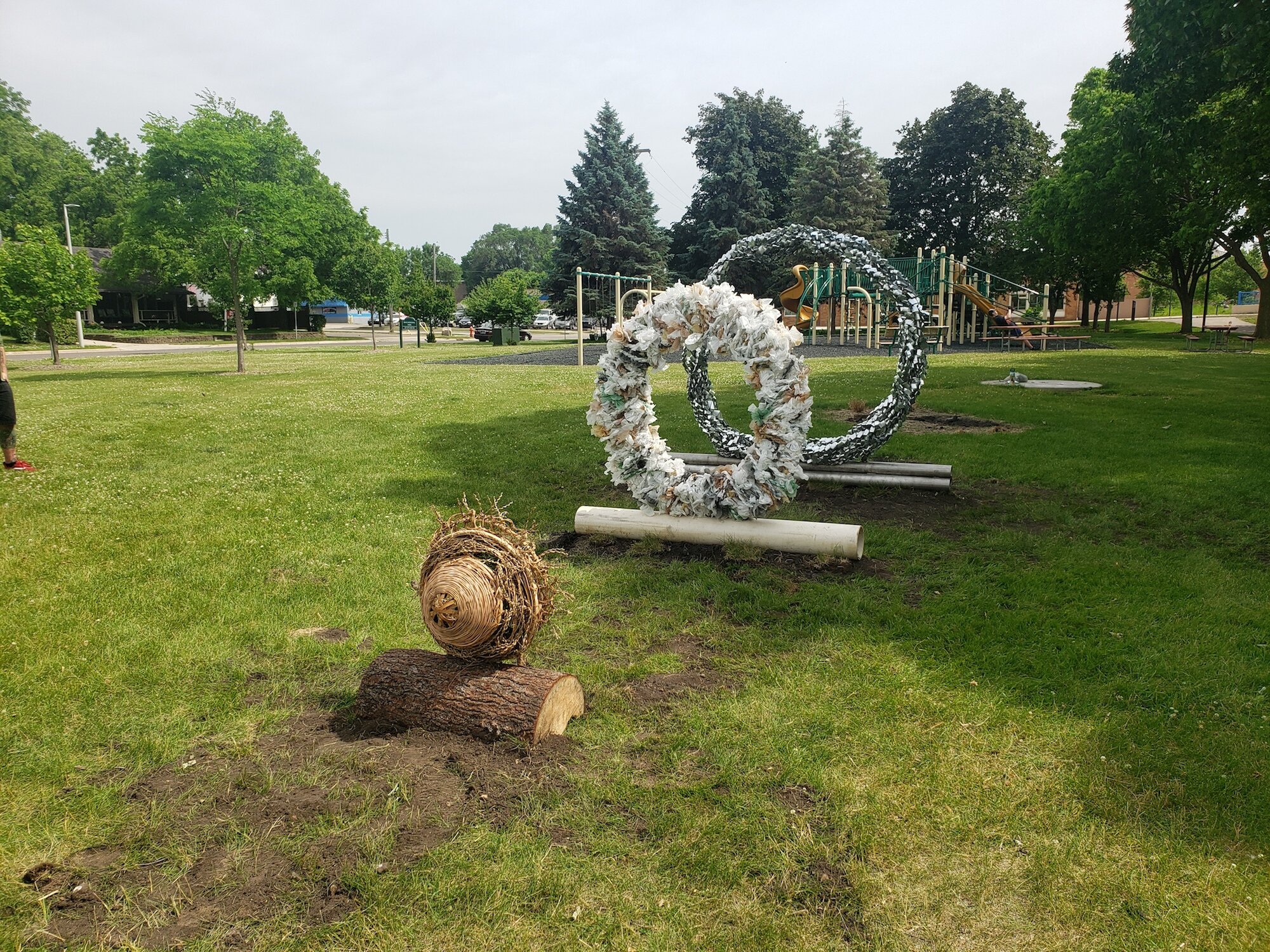
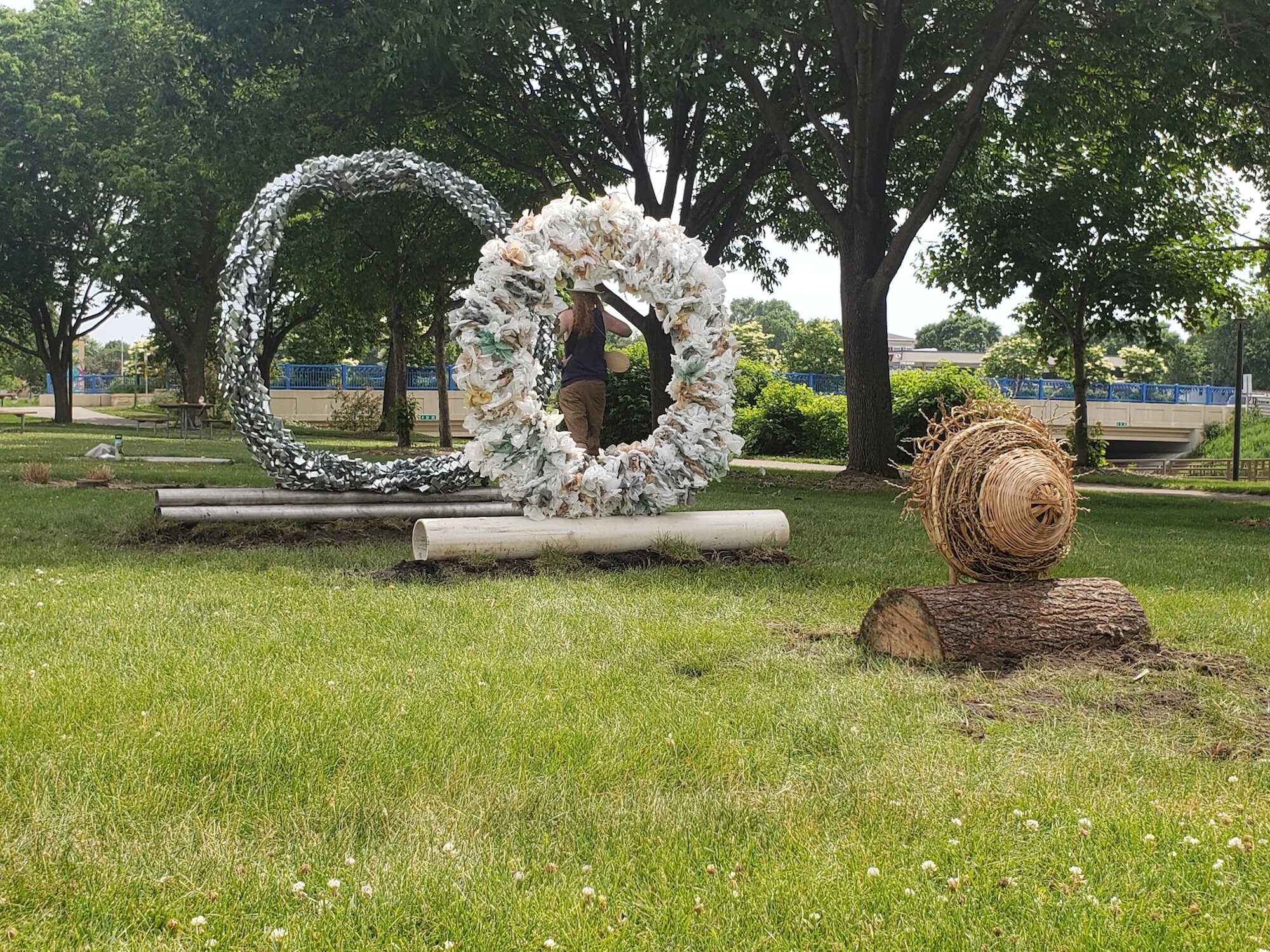
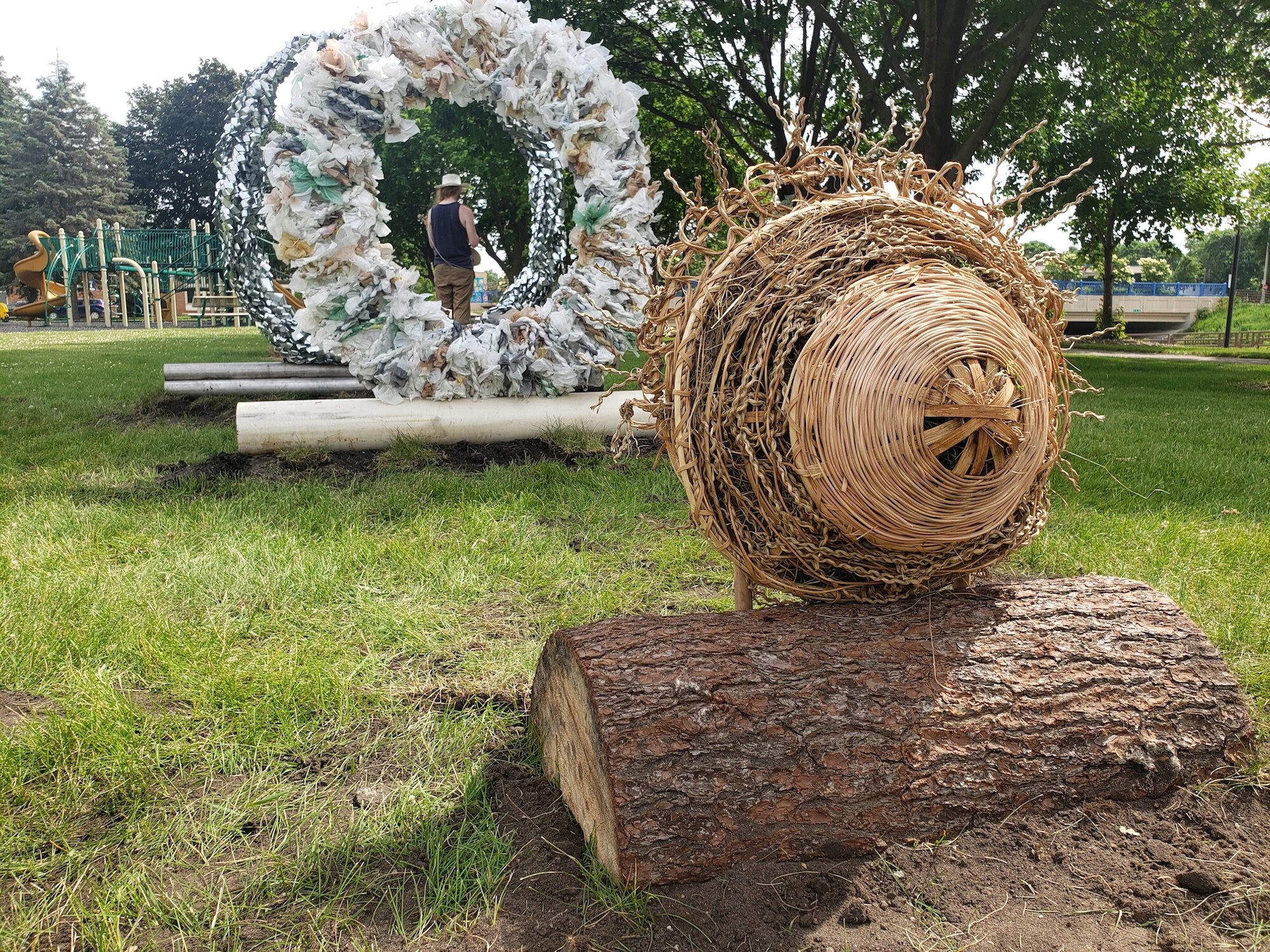
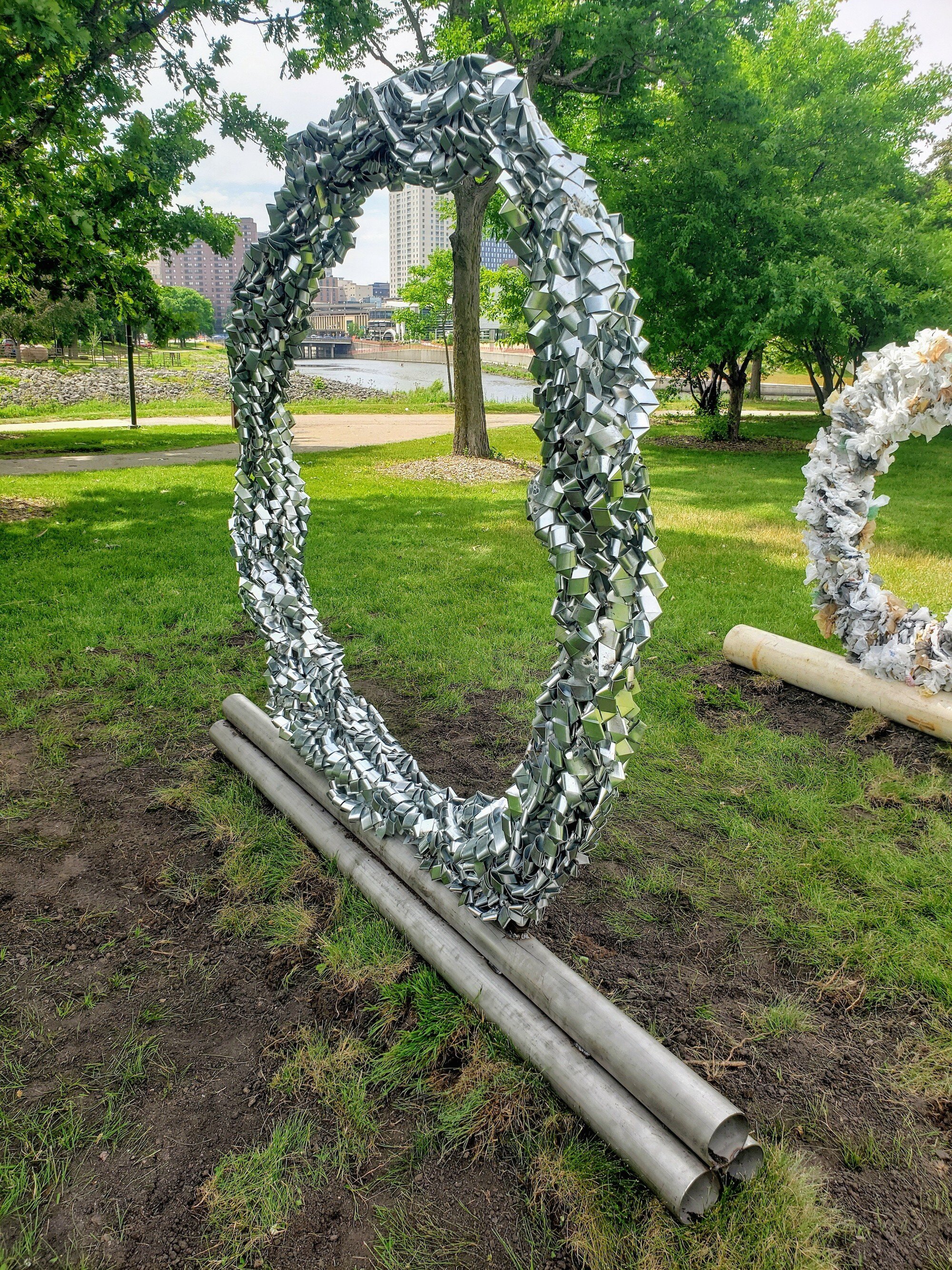
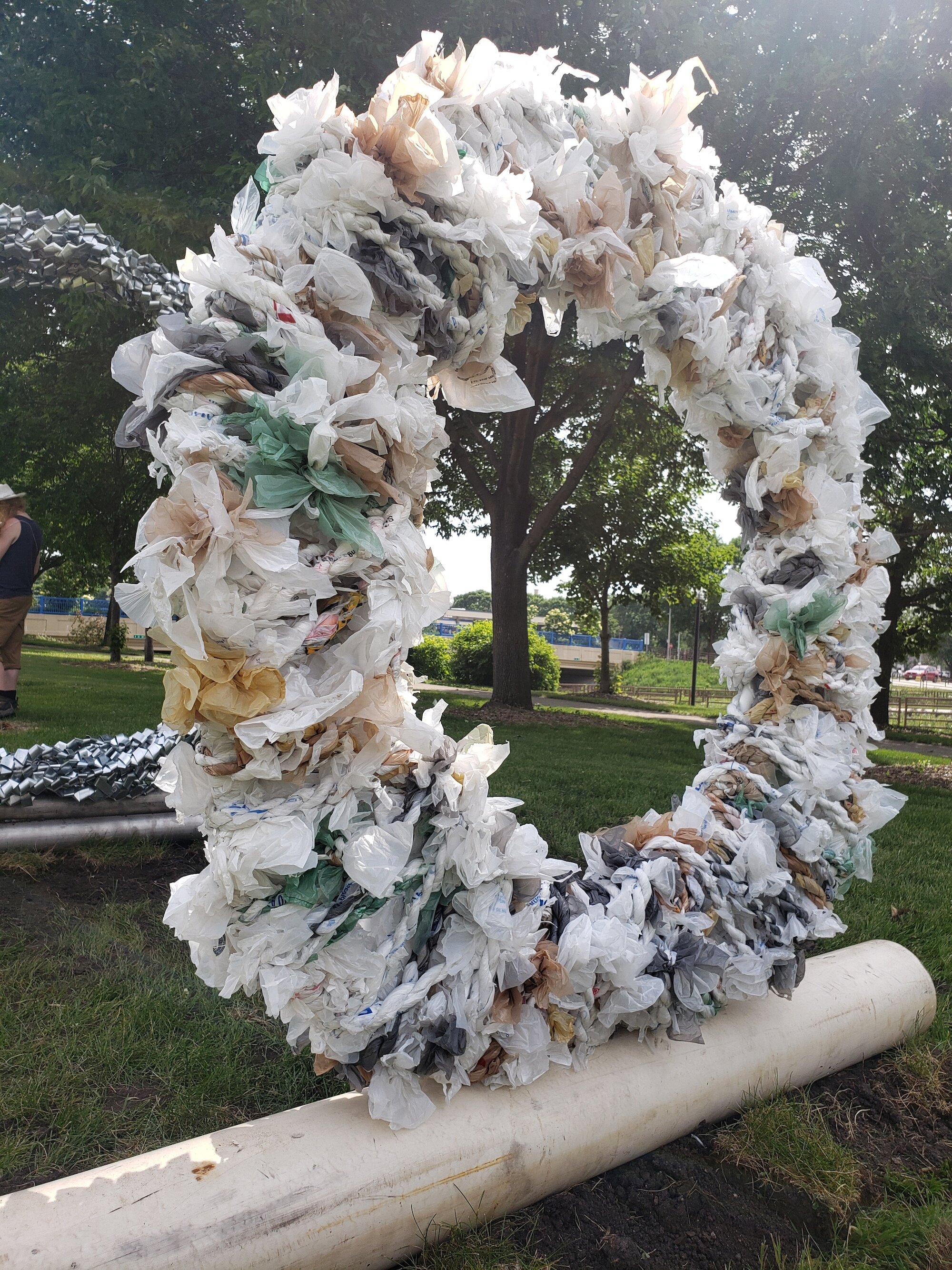

Loom is an installation of three circular forms.
Seemingly disjointed, but connected through their shared space. Each “wreath” like structure has been crafted from intertwined strips of aluminum, ropes of single-use plastic grocery bags, and woven reeds and grasses respectively. The largest circle has been constructed from traditional building materials. It is the most sturdy and long lasting, but it also has the largest hole in the middle of the piece. Therefore, it is the most incomplete with a facade of structure. As the metal degrades overtime, metal waste leads to the contamination of soil and water sources on the surface and subsurface level. The middle “wreath” was created from PVC pipe and over 550 plastic grocery bags. Although smaller, this piece is also incomplete from the toxicity of Plastic Pollution: the accumulation of plastic objects in the Earth’s environment. The last and most unassuming sculpture was fashioned from basket weaving, braiding, and plain weaving techniques. This piece is complete. It will also evolve overtime from environmental factors, but the natural materials of the sculpture will not harm its surroundings. All together, the three circles can be viewed together as one form.
This sphere addresses the negative impact of metals and plastics on the environment, and emphasizes the sustainability of the natural fibers in the center, like a bullseye. This sphere depicts the Earth itself. While separately, each circle references weaving looms, where the title of the installation is given.
The techniques used to create these pieces also continue my own family traditions of metal working, rope making, and basket weaving. These techniques can then continue to be preserved, as weaving is one of the oldest surviving practices in the world. While weaving has become commercialized, it is a traditionally domestic technique passed down through matriarchal lines as a social art. This installation also explores changing power dynamics as feminine craft based techniques and motifs reclaim outdoor sculpture. As a discussion of social consciousness and environmental sustainability, the installation then asks one final question:
Will the longest lasting form be made from the traditional metal structure, the single-use plastic consumables, or the tradition of weaving as a social art?